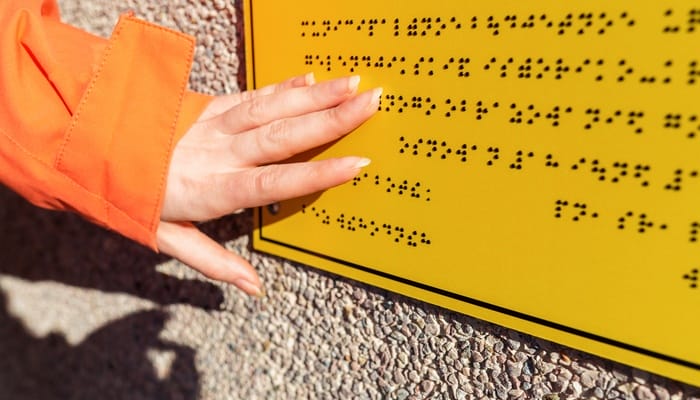Braille signs play a crucial role in fostering inclusivity and independence for individuals who are visually impaired. They ensure easier navigation of public spaces and compliance with accessibility standards.
However, damage to braille signs can render them ineffective, leaving a significant gap in accessibility. Understanding the common causes of damage to braille signs can help you prevent sign degradation and prolong their durability.
Environmental Factors
Environmental elements are one of the biggest culprits behind the shortening of a braille sign’s lifespan. Sunlight, for example, can be particularly damaging. Prolonged exposure to UV rays causes the materials to degrade, resulting in signs that fade or lose their tactile readability.
Moisture also poses a significant threat, as it can seep into adhesives or the materials themselves, compromising the structural integrity of the sign. Additionally, fluctuations in temperature, such as freezing winters and scorching summers, can cause materials to expand and contract repeatedly. This process weakens the braille sign’s construction over time, ultimately leading to cracks or loss of tactile elements.
Vandalism
Vandalism is a common issue, particularly in high-traffic areas. Intentional damage, such as scratching or peeling off tactile components, often leaves braille signs unrecognizable and unusable. Even unintentional actions can lead to harm.
For instance, bumps from heavy equipment, rough handling, or repeated contact by pedestrians can erode the sign’s functionality. These damages are particularly problematic in crowded public spaces such as train stations or shopping malls, where wear and tear happen quickly.
Improper Installation
Another common cause of damage to braille signs is improper installation. Weak adhesives or mounting methods often result in signs becoming detached from surfaces, making them inaccessible. Incorrect placement also exposes them to unnecessary risks.
For example, placing signs in a location prone to high impacts, such as near storage equipment or doors, increases the likelihood of accidental damage. Without meticulous attention to placement and installation, even the most durable braille sign could deteriorate prematurely.
Substandard Materials
The quality of the materials used is crucial in determining the longevity of braille signs. Low-quality materials are inherently more susceptible to wear and tear, often becoming unreadable within a short period.
Furthermore, using non-compliant materials that do not meet the required durability standards can result in signs that fail to withstand environmental and physical challenges. Choosing inferior materials as an initial cost-saving measure may require you to fix damaged braille signs or replace them entirely later.
Invest in Durable Solutions
Damaged braille signs hinder accessibility and fail to meet legal and ethical expectations. Selecting high-quality, compliant materials, ensuring proper installation, and maintaining signs meticulously can significantly reduce the risk of damage. Investing in durable solutions today helps you create environments that remain inclusive and accessible tomorrow.







